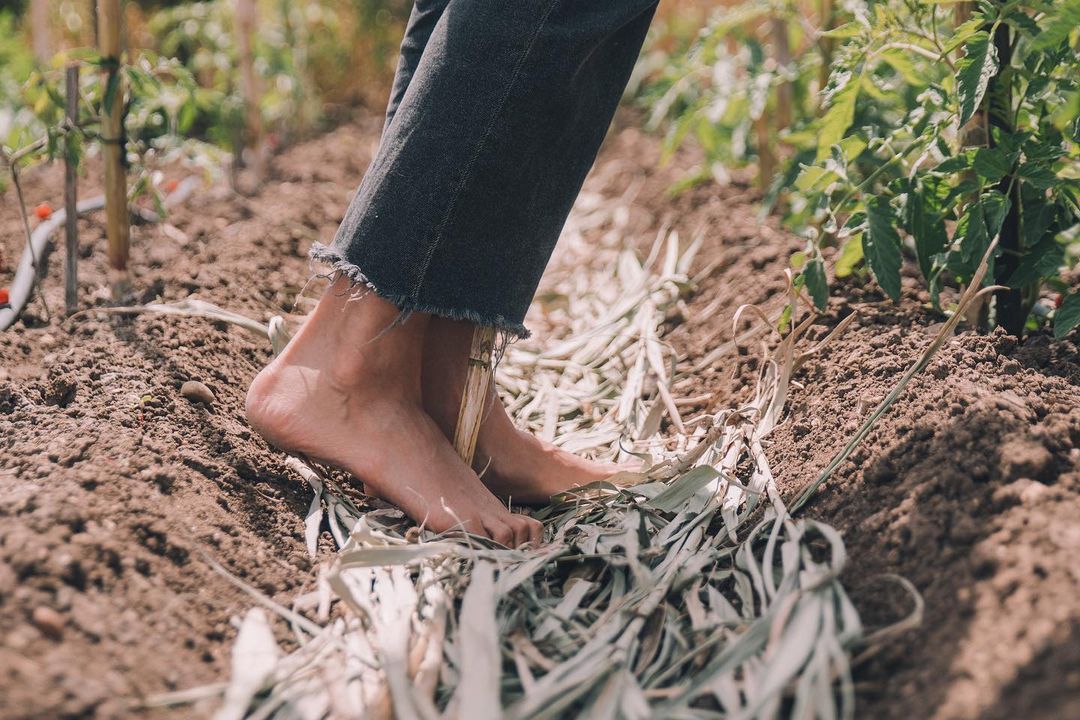with Rut Sagrera
Words by Elisa Routa
Images by Ale Sellers, Eva Abeling, Marina Mantolan, Marta Guillén, Rut Sagrera
Did you try to grow tomatoes on your balcony during lockdown? Of course, you did. At least, your neighbor did. You saw it on Instagram. Slow living recently became a big trend worldwide, gaining momentum during the Covid crisis in the same way as your grandma became popular overnight on Tiktok. However, slow living is, above all, a philosophy—a thoughtful way of life where natural agriculture is favored over extensive agriculture, where individualism turns into community, where patriarchy is replaced by ecofeminism, where life grows from destruction, where thinking local is the norm, where quality is prioritized over production speed, where domination turns into resilience, and where competition makes way for cooperation.
“The slow life movement allows you to place well-being at the heart of your life, unlike capitalism that places money and work at the center of it,” explains Rut Sagrera who didn’t wait for until algorithms to build a new model of regenerative life with her friends. Alongside her brother Alvaro, she co-founded the Semillero project (literally meaning seed in Spanish), a growing movement of activists, earth lovers, ecofeminists, farmer’s apprentices, and surfers, building a new ecological and sustainable system in the south of Spain.
While the heat wave is currently drying up Western Canada with unusual temperatures, Rut Sagrera reminds us of the growing importance of water and ecofeminism. “Neither the land nor the women are the land of conquest.” We talked about surfing as a life philosophy, the power of the collective, educating and learning through art, and Poblenou. Nope, it’s not the nickname of a kid’s doll nor a baby pronouncing problem with carrot purée in his mouth. It’s more than that.
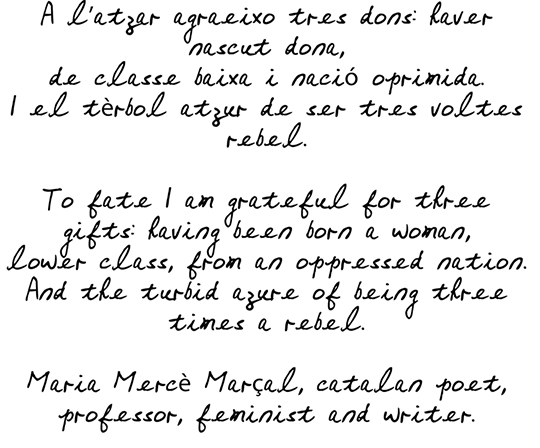
Tell us more about your background, Rut.
I grew up in the city but close to the sea. A city like Barcelona offers diverse job, social, economic, and educational opportunities but, at the same time, it is very demanding. I grew up in a neighborhood called Poblenou situated near the sea where my whole family still lives today and for whom I have a special affection. Poblenou has a long pathway that reaches the sea. When we left school, my mother would buy me ice cream from the Tio Che ice cream shop, the oldest and the best in the neighborhood, well-known for its horchata. Then, we would walk until the end of the path and sit in front of the sea next to my father and brother. What wonderful memories!
I was not especially intelligent but was a good student, I’ve always liked literature, humanities, and social subjects. At the time, I wanted to be a teacher. Look where life brought me again today. I’m reunified with the task of environmental education. I feel more in tune than ever.
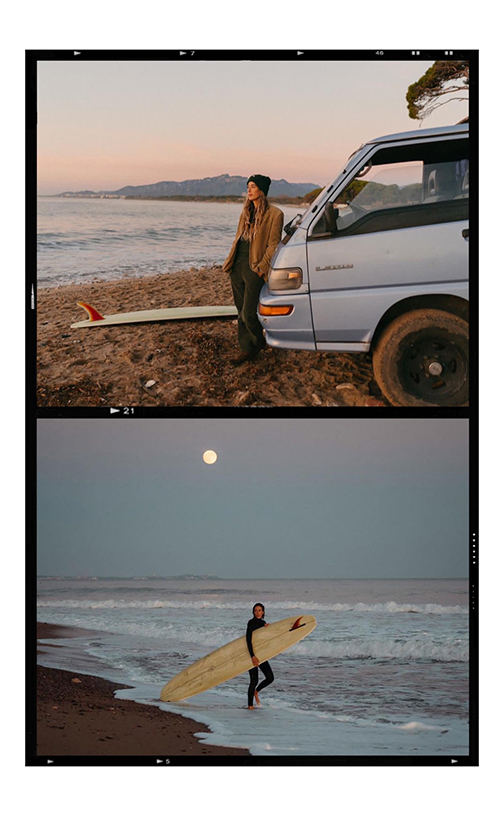
What do your current surroundings look like?
Although I am Taurus and we do not like changes, my ascendent is Scorpio and my moon is located in Gemini so I love changes! I like to live here and there and see where my heart guides me. Right now, my place is somewhere between the north and the south of Spain. During winter and spring, I live in Cadiz, whereas during summer and autumn I’m around Tarragona. Both places are paradise. Cadiz is surrounded by countryside, orchards, sea, and good waves. In Tarragona, I live close to my family, in a wild forest 15 minutes away from the sea. In both places I am close to the sea and I have a large garden.
When did you first get introduced to the idea of sustainability, the protection of the planet, and the ocean?
Since I was a child I have been very responsible with my things. Even if it was done with less consciousness and less knowledge, I never envisioned my life without the notion of sustainability. I evolved towards a full connection with my ecosystem in which I recognize and observe myself. There are a few important moments in my life that marked my ecological path such as getting to know my partner, getting into surfing, training in Kundalini yoga, meeting my brother Alvaro with whom we created the Semillero Project, and starting a master’s degree in ecological transition and eco-social humanities.
“The collective helps to move from an idea to an action.”
How does this translate into your everyday life?
Sustainability in my day-to-day life represents everything. To lead a sustainable life, we must be brave and rebellious. We must be able to recognize important decisions, and eventually make them. It is not an easy road but, in the end, it’s so simple. The complexity in which we are immersed is the most difficult part, and yet we oblige ourselves to that complexity. In order to be able to take an ecological path, you must remember that all your daily actions have a positive or negative impact on this planet. Therefore, being aware of this can somehow help you learn to sacrifice yourself.
Tell us about your initiative called the Semillero Project, your values, actions, and the community of like-minded people united around the project.
The Semillero Project is a community that works for the development of sustainable agriculture and the promotion of new models of regenerative life. A community from sea and land that works together to grow and accompany in the path of ecological transition.
The project was born as an incubator. We have been here for just a year. It has been a revolution for us! Both Alvaro and I wanted to create something that would transform through example. We believe that the path of ecological transition and sustainability needs real and local examples where people can rely on and take examples of — small, viable, and soul-led projects. A place to rest and accompany other people in their transition to veganism, value of time, eco-feminism, meditation, contemplation… A place where you feel accompanied because when you are alone you often feel that you do not have enough strength to change things. The collective helps to move from an idea to an action.
Our path is transformation and environmental education. Our vegetable garden is only the tool that guides the community in many decisions. It is an excuse for joining and sharing. Within the Semillero Project, we work on ecological transition through events such as volunteer workshops focused on natural agriculture. We also organize workshops for children where we work on sustainability, food, connection with the environment, the circular economy, and the value of time. We also have a local action group called the Climate Club, where we are working on real actions in nearby towns such as the Environmental Reading Club or the Cine Club, among other activities.
“Everything was born from a seed. The secret of the universe lies there, in the smallest aspect but also in the most powerful.”
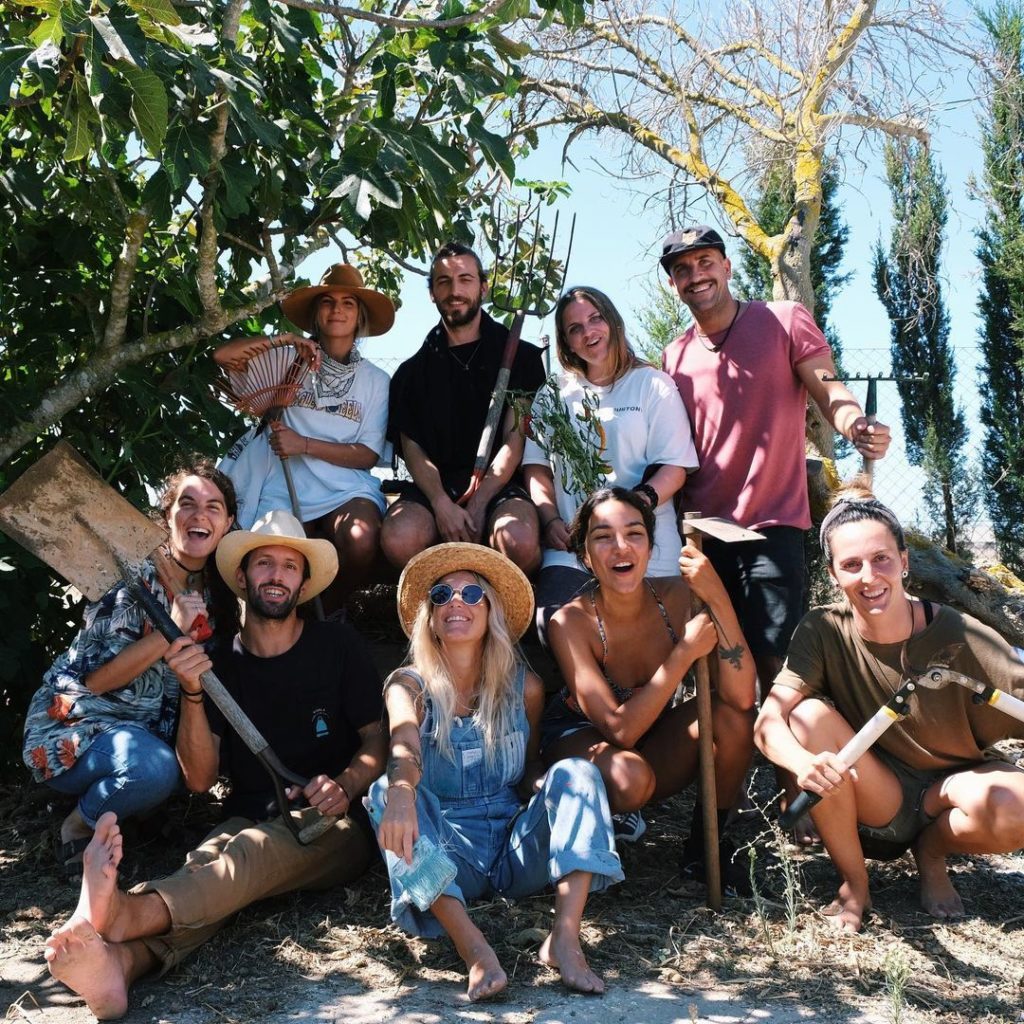
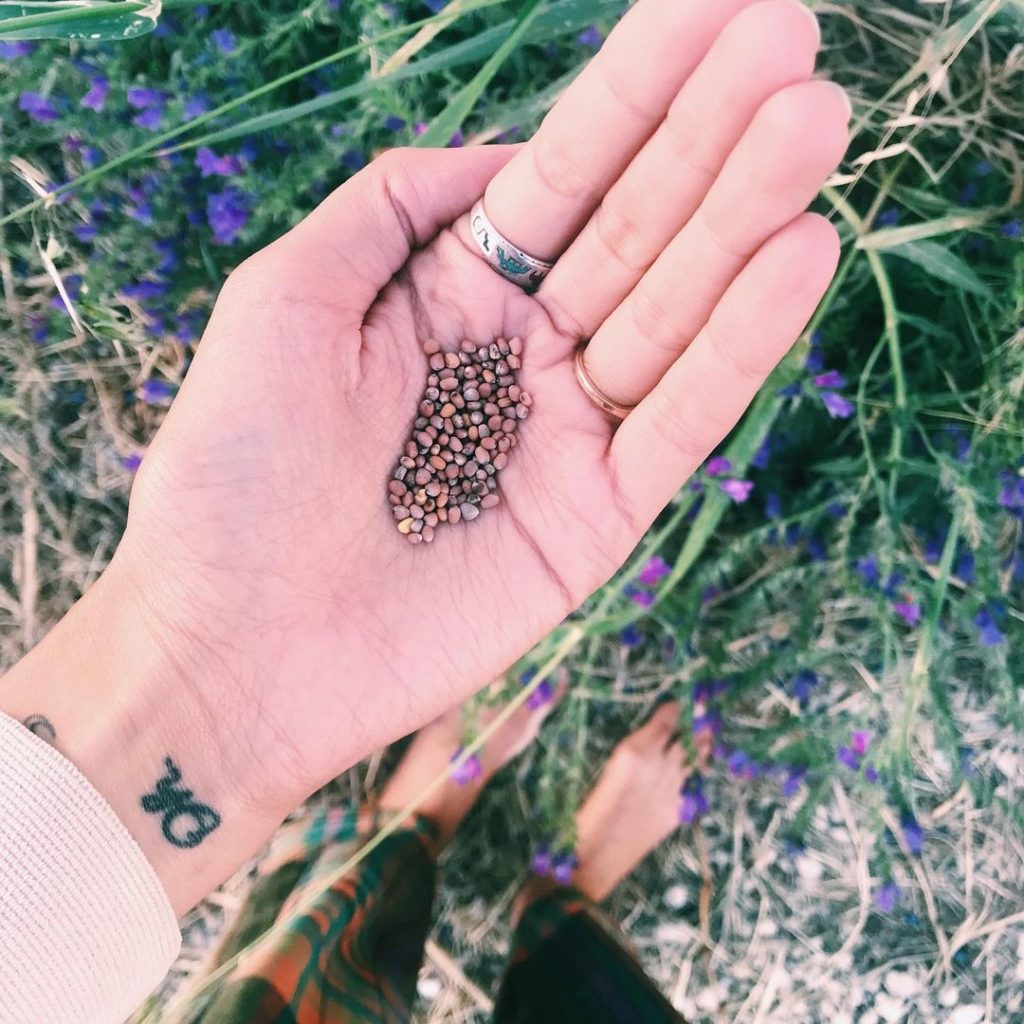
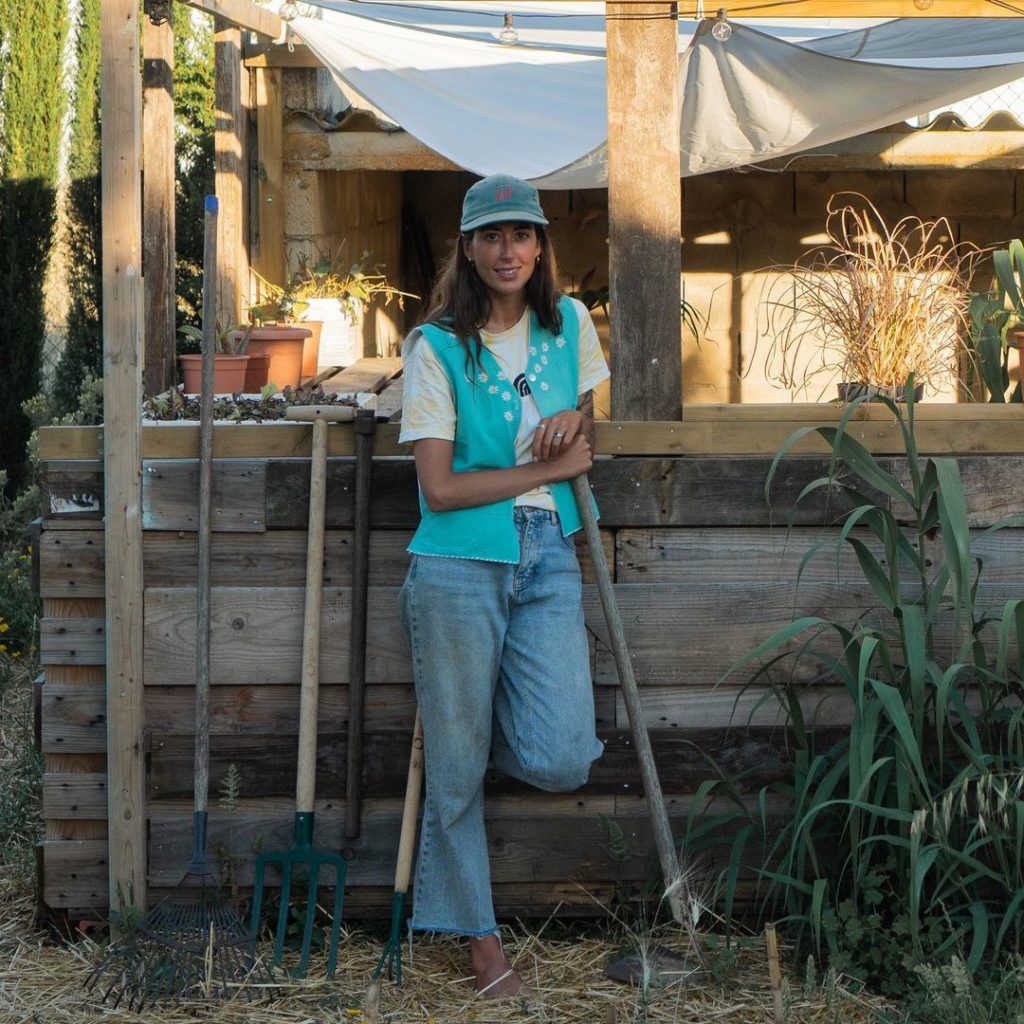
You not only ask yourself if what you do and what you buy will impact the planet, but also if what you consume will as well. Why is it important for you to grow your own food?
In our garden, everything is edible! The most important thing for us is the seed. Where does it come from? Who gave it to us? Who kept it? Everything was born from a seed. The secret of the universe lies there, in the smallest aspect but also in the most powerful. Here, all our seeds are ancestral. We try to recover and preserve them so that they can be distributed and exchanged with the community. That way, they can reach many orchards and houses. Our vegetable garden works from permaculture where everything that surrounds us is a living ecosystem which is related to roots, flowers, and insects. Some plants help others grow, reproduce, bring the fruit out, or fight a plague. The impact of natural agriculture and permaculture is great. In permaculture, not only do we know four types of cereals or two types of tomatoes but they also have room for all native plants. And we try to recollect them.
Moreover, the most important thing in our agriculture is the Earth. If the land is rich then we will not have any problem. The Earth herself will take care of her recovery and breeding function, unlike extensive agriculture that focuses on monoculture and the exploitation of the land at its maximum yield. Our vegetable garden is circular, not linear.
“Take your time to choose your way, be brave, and take action. We must mobilize! There is no change without movement.”
Rut, you claim the benefits of living slowly—, taking a slower approach to everyday life. What does the Slow life philosophy mean?
Calm, observation, contemplation, and peace. The slow life comes from an eco-social and spiritual life unlike Western life which is based on capitalism, speed, and maximum exploitation of time as economic benefit. The slow life allows you to place well-being at the heart of your life, unlike capitalism that places money and work at the center of it. For me, the defense of a slow life is a life full of peace and contemplation. As soon as I detect that something disturbs my peace of mind, I ring my alarm which tells me, ‘This belongs to the rules of another system, your system does not allow money, work, and ambition to take away your peace, your health, and your love.’ I always try to remember those words. Whenwhen something separates me from love then it is not a good decision.
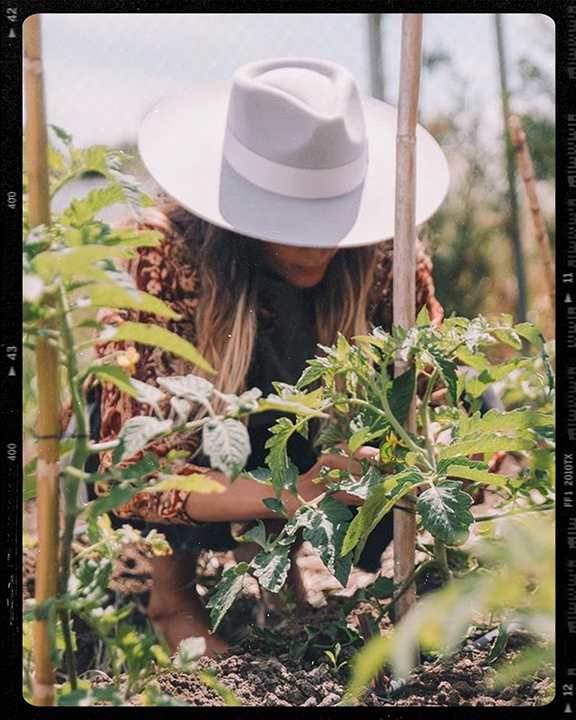
What message would you like to share with our readers?
I could give you millions of messages and talk about eco-feminism, veganism, anti-capitalism, anti-species… but I think the most valuable is the following one: “Take your time to choose your way, be brave, and take action.” As Vandana Shiva says, the only laws we have to follow are those of Gaia, our mother. Everything that violates or goes against these two powers must be disobeyed either individually or collectively. We must mobilize! There is no change without movement!
“Ecology is not only about taking care of nature but it’s about working collectively so that what happens among us as a species also happens in nature.”
Rut, you have a foot on the ground and the other in the water. What role does the ocean play in your life and in which way does it influence you?
The sea is everything for me, it is the regulator of our planet. What are we but 90% of water? I was born in the Mediterranean Sea, in a fishing district. My connection with the ocean has always been very close but, surfing….. surfing is something else! My surfing is my meditation, my connection with nature. The element of water makes me alive. Surfing is consciousness, it is elegance, it is being the wave at all times, flowing with it, feeling part of this immense ocean. Our life is totally linked to the sea and the earth. They are my two elements in which I feel alive. I feel that I am the ocean and I am a plant at the same time.
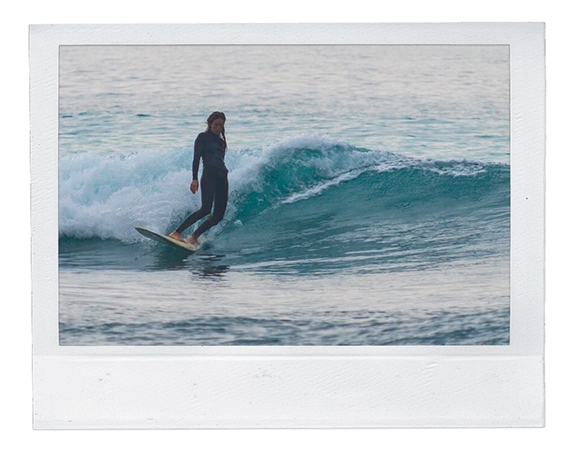
Does surfing connect you to ecology?
Certainly. My vision of surfing comes from the roots. It comes with the recognition of those who were here before me as Phil Edwards, Miki Dora, Sam Bleakley, Mary Ann Hawkins, David Nuuhiwa Marge Calhoun, and those who made surfing come to us as a life philosophy. Surfing is not only about taking care of the ocean but it’s also about taking care of ourselvesus as a community. Surfing is not only riding the wave but also being the wave, it is not a matter of competing. What happens in the sea is part of your life on earth. Ecology is not only about taking care of nature but it’s about working collectively so that what happens among us as a species also happens in nature. Work from empathy, respect, love, and freedom as a community, as a species and as a planet.
Is vanlife a way to combine your love for surfing and traveling?
Of course! But you don’t need to have a van to enjoy surfing. I’m more of an advocate of nomadic life. That’s what we did a thousand years ago: humans, like other species, used to move in order to find the best time, the best land, the best water, and the best place to spend winter or summer. So, obviously if surfing is your life, you have to be a nomad with or without a van. Although it seems that traveling goes against ecology, it is not entirely true. The main problem is not movement but overpopulation, and above all, how we move.
My upcoming projects ? Living.
Watch Rut’s short film entitled Gratitude created by Marta Guillen
Follow Rut’s story
